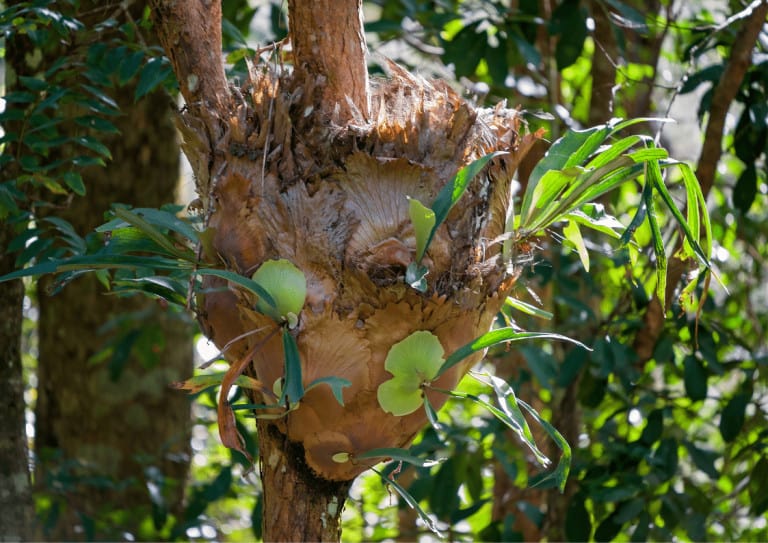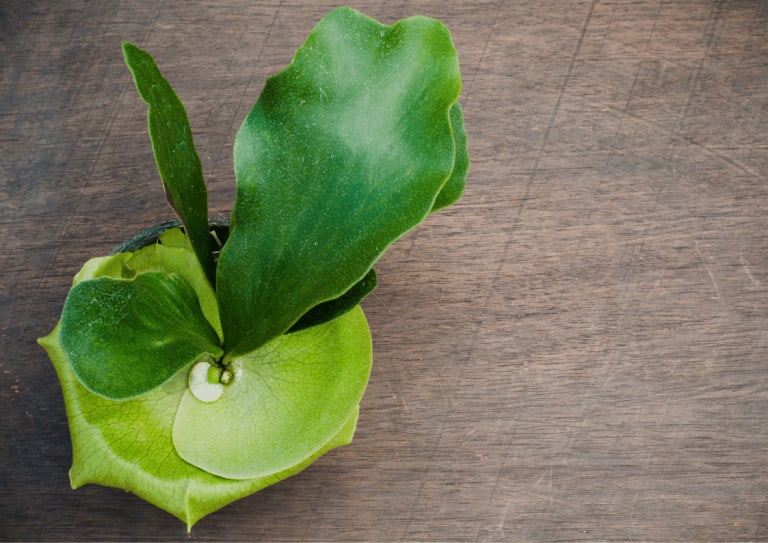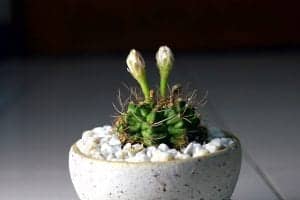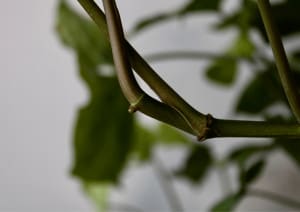How To Separate Staghorn Fern Pups From The Adult Plant?
- Lakeisha Ethans
- April 27, 2022
If you buy something using the retail links in our articles, sometimes we earn a small affiliate commission. This does not impact the products we recommend.
In the wild, staghorn ferns propagate easily on their own without any aid from human beings. This is done via “pups”, which are fertile fronds made up of spores. In domesticity as house plants, these pups are often used for manual propagation. To do this, you usually have to divide healthy ferns by separating the fertile pups and mounting or planting them.
To separate staghorn fern pups from their adult plant, you need to understand the plant’s biological structure. The process involves locating viable fertile offshoots of the adult plant and either cutting or twisting them off. These offshoots are made up of two or more fronds that have fertile, mature pups attached to them.
Staghorn fern pups are relatively easy to locate and use, with a pretty high success rate of rooting and further growth. In this article, we’ll take a closer look at how this process works each step of the way. Topics we’ll be covering include:
- How do I identify valid staghorn fern fronds and pups?
- How do I divide a staghorn fern?
- How do I mount staghorn fern pups?
- Do I have to separate staghorn fern pups?
This post discusses staghorn fern pups, the fronds that they’re attached to, how to separate them, and some other information related to these plants and their growth.

How do I identify valid staghorn fern fronds and pups?
Staghorn fern pups are small new ferns that are covered in a layer of fuzz. They’re essentially balls of fuzziness in colors like black, brown, or tan, usually with a white-colored inside if you cut them open. These balls form underneath older fern leaves, sometimes close to where the leaves meet with the trunk. One single leaf may have multiple pups.
Not all staghorn fern fronds will be ready for propagation when you see the pups underneath them. When they first develop, these pups are very pliable and soft, and at this stage, they’re not yet ready to be used for propagation. You’ll need to wait until they stiffen and harden and become darker in color.
Dark brown pups that are almost black are typically around the right age for propagation, with tan undersides. If you allow them to further mature, they’ll eventually become more and more similar to a mature fern until they can’t be properly distinguished from them easily. Valid pups for division will appear almost like mini versions of the adult plant.
The best time to look for pups at the right age is during the growing season, in spring or summer. If you’re using free-rooting cuttings, pup harvesting should happen when lower leaves have dropped or when they have hit the height of about four inches.
Only fertile fronds develop pups underneath them. These fronds are Y-shaped and appear like antlers, and this is where the ferns actually get their name! Shield fronds, also called sterile fronds, hold rhizomes and roots and are rounder and flatter, usually attached to the tree or mount directly. Shield fronds themselves are not fertile and cannot be used alone for propagation.
How do I divide a staghorn fern?
To divide a staghorn fern, you’ll need to start by properly identifying the pre-existing offshoots from the fern. Offshoots are natural divisions of these ferns, typically consisting of one shield frond and the fertile fronds that are attached to them. Remember that without a fertile frond, a staghorn fern cutting cannot be propagated.
When you find the natural division, you can remove them from the adult plant to plant. Many can do this with their hands when it comes to fully formed shoots with shield and antler fronds. Simply twist the stem or root and pull them free. If this is difficult or the shoot is stubborn, sterilize a knife and use it to cut the roots off.
You can also divide staghorn ferns without completely formed offshoots. Simply take a shield frond and divide it into numerous smaller pieces. Each piece must have its own selection of fertile fronds, rhizomes, and roots. These roots must be as cleanly severed as possible, so you may need to take some time to properly make sense of the tangled mass of roots under the frond first.
Pups die quickly when not immediately mounted, planted in soil, or attached to a source of nutrients. Basically, you must immediately tend to the cutting as it won’t survive on its own for very long. As such, you shouldn’t divide or separate fern pups until you’re ready for the next steps in propagation or growth. Many fern pups will do best when divided in spring.

How do I grow staghorn fern pups?
It’s fairly easy to root staghorn pups, which is good because you have to do it quickly. They have a better chance of successful rooting when propagated in groups, but you can still attempt to mount just one of them with a reasonable success rate. They grow quickly and root at impressive speed, so be sure to keep an eye on them at their growth.
Most staghorn fern pups are mounted as a method of growth and propagation. The process requires several steps and some materials. Usually, you’ll use a preserved or untreated piece of wood, a selection of sphagnum moss, and an item that can be used to hold everything together, such as a clear fishing line or a pantyhose.
To mount fern pups, you moisten the moss and place it onto the wood, then place the fern cutting’s root ball onto the moss. Sometimes, the ball has to be flattened first to affix properly. The cutting is then wrapped with more moss, with some people opting to add sheet moss to the mix, too. The plant is now secured with a fishing line or any other workable tying object.
You can also propagate these pups by applying them onto a fern that is already live-planted. These pups must be stuck onto the centers of a piece of these ferns and left to slowly form over time. This will likely take until the next growing season.
To do this, you’ll have to cut off a part of the plant base about two inches above the soil line, then press the pup into the cut area. You might also need to tape the pup to the cut portion for about two weeks to ensure their joining.
Finally, some people choose to grow staghorn ferns in pots. This is not needed and is unusual, as staghorn ferns aren’t the type of plant to grow in the ground. But this can still be done, as long as there’s a lot of drainage space in your chosen soil mix!
Do I have to separate staghorn fern pups?
There’s no requirement to separate staghorn fern pups from the adult plant. If you decide against removing them, they will simply continue to grow and more pups will develop over time. This will create a large, extremely verdant fern that looks quite impressive.
Do note that ferns allowed to grow unchecked will get quite bulky and heavy. If you lack space, you’ll need to thin out the plant by pruning off some pups, even if you don’t use them for propagation and simply throw them away.
Take home message
Staghorn fern pups appear and develop on the underside of Y-shaped fertile fronds. These fronds grow on base shield fronds, together forming an offshoot that is viable for propagation. Offshoots that are not fully grown can still be used, with shield fronds being cut into sections. Each section must contain pups, fertile fronds, rhizomes, and roots for best success.
After being divided, staghorn fern pups and their fronds must be mounted immediately. They can also be attached to a pre-existing live-planted fern or simply placed in soil, though the latter is uncommon. All in all, though it’s a delicate process, the high success rate and relative simplicity of fern pup separation make staghorn ferns a great choice for propagation.

Lakeisha Ethans
Houseplant Writer
Mother to two humans and hundreds of plant babies. Lakeisha uses her 15 years of experience as a content writer to specialise in simplifying what you need to know to grow and care for all indoor plants.
Similar Posts
How Do Indoor Plants Get Pollinated?
How do indoor plants get pollinated when they are often prevented from coming into contact with natural dispersal methods such as wind and pollinators?
What Is A Spent Node? (How And When Do They Occur?)
When your plant cutting doesn't successfully propagate, is it just bad luck, or is a spent node to blame? Learn the answers in this brief post.



